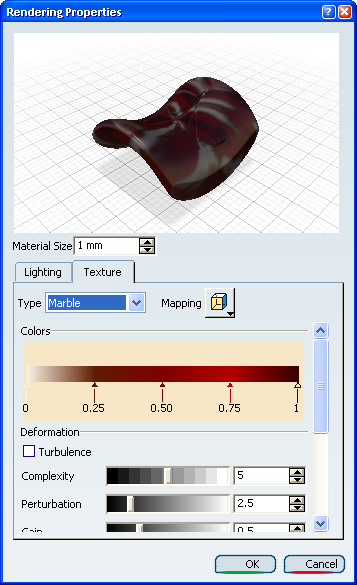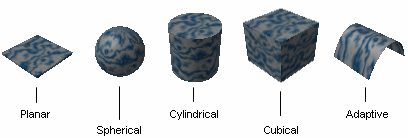
|
Planar Mapping |
You can use it for planar geometries such as a slide projector (a
picture on a wall, for instance) or for textures with two
privileged directions such as a texture representing a chessboard
or a wall of bricks. |
| Spherical Mapping |
You can use it for spherical geometries such as a painted light
bulb or a ball, or for textures that do not have a privileged
direction such as stone or raw metal. |
| Cylindrical Mapping |
You can use it for cylindrical geometries such as a can of food or
a bottle, or for textures having a privileged direction such as
shiny metal or marble. |
| Cubical Mapping |
You can use it for cubical geometries such as a box.
|
| Automatic Adaptive Mapping |
Automatically detects the mapping that best fits. |
| Manual Adaptive Mapping |
Gathers together faces which have close normal vectors. The
precision value defined using the slider modifies the tolerance
used during the grouping process. |



